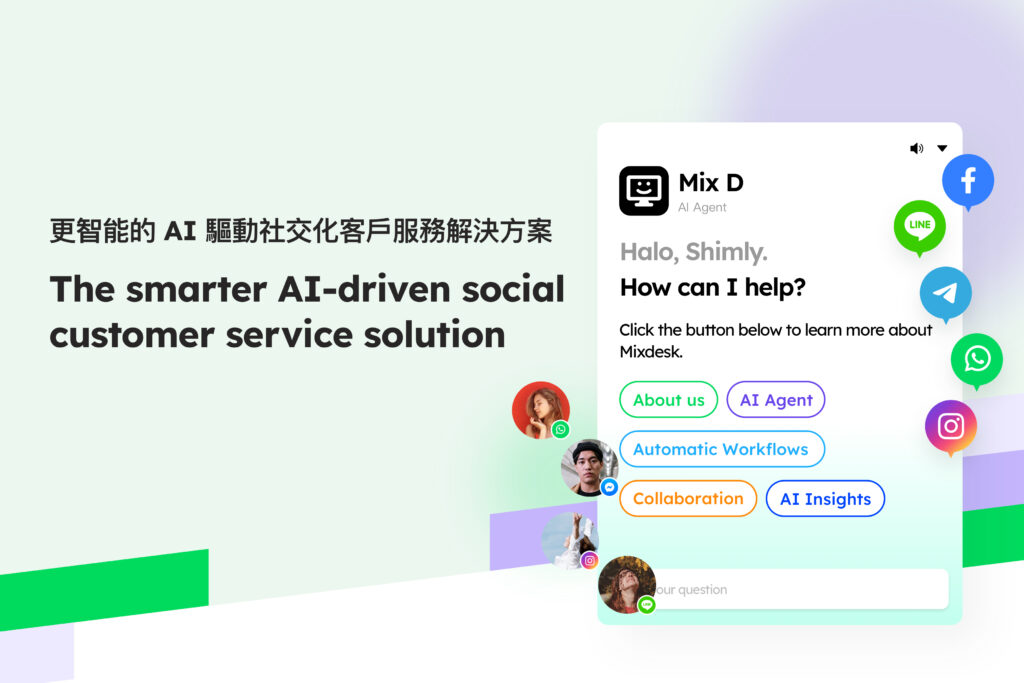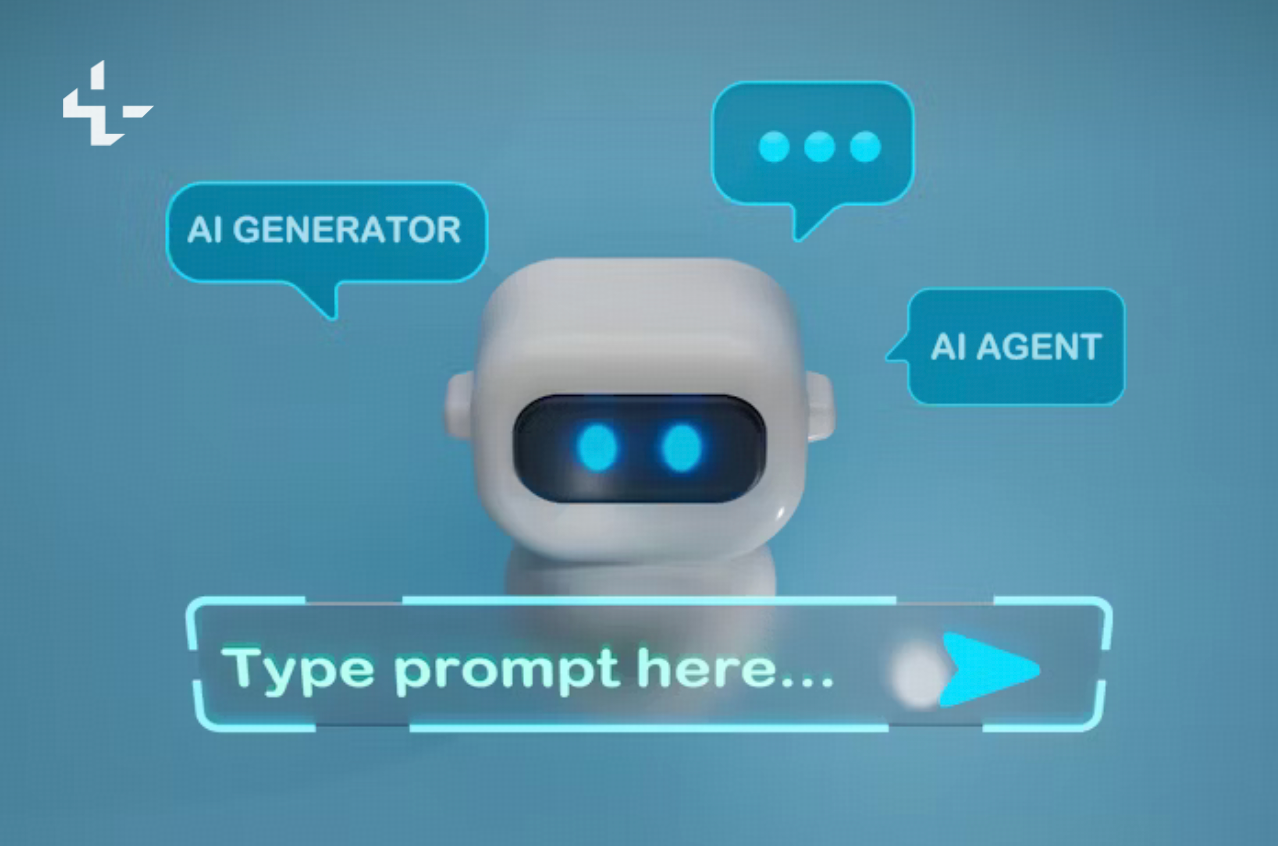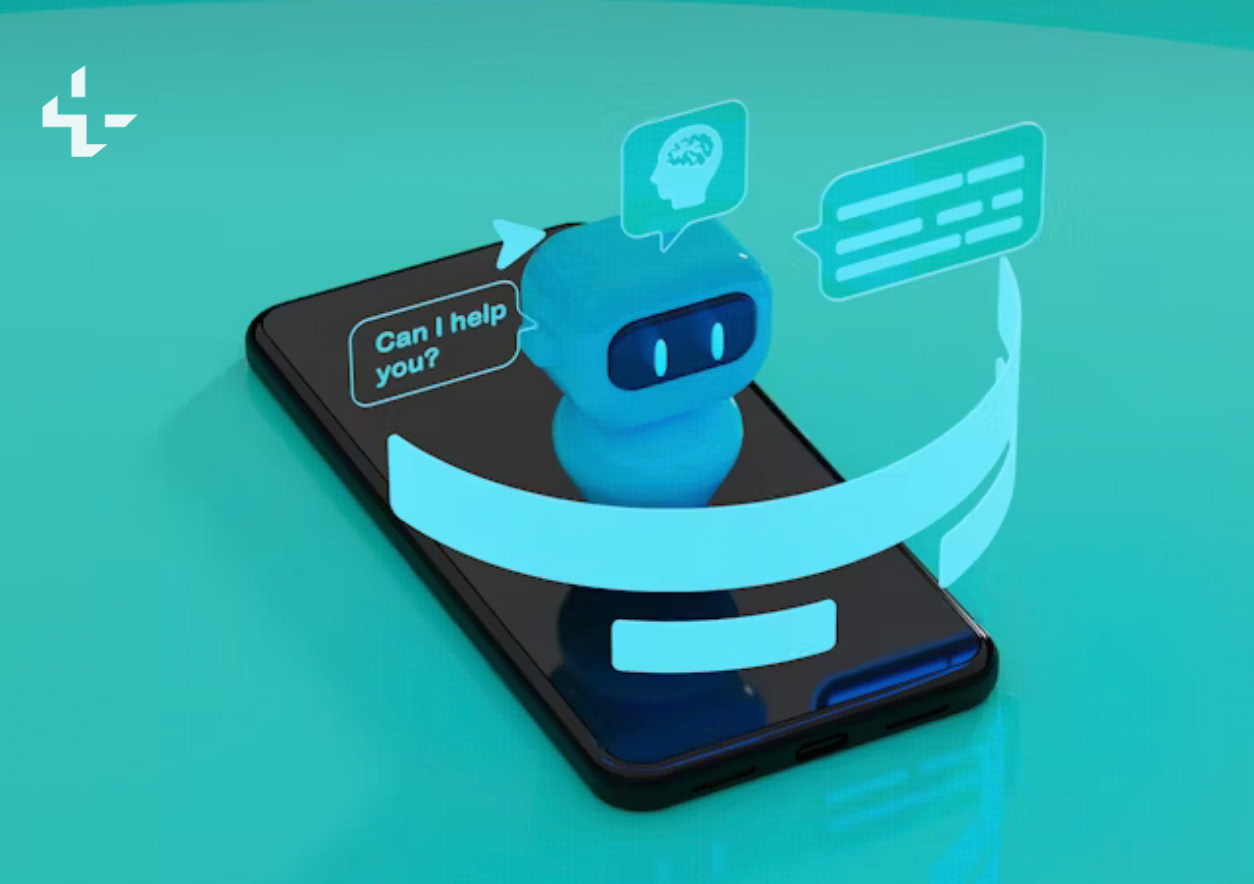Author of this article:Miya, Search engine optimization expert
With the rapid development of artificial intelligence technology, AI customer service has become an important part of many industries. From the original simple question-and-answer robot to today's intelligent assistant that can handle complex questions and provide personalized services,AI customer serviceThe model of customer service is being redefined.
This article will explore in depthAI customer serviceThe origin, working principle, advantages and limitations, and its potential in the future.
Mixdesk
AI Agent

- 1. The origin and evolution of AI customer service
- 2. The working principle of AI customer service
- 3. Advantages of AI customer service
- 4. Limitations and challenges of AI Customer Service
- 5. Application scenarios of AI customer service
- 6. The future trend of AI customer service
- 7. Case analysis: the successful practice of AI customer Service
- 8. How to build a successful AI customer service system
- 9. The ultimate torture: Will AI replace human customer service?
- 10. Conclusion: Opportunities and responsibilities of AI Customer Service
1. The origin and evolution of AI customer service
From manual to Automatic: the Evolution of Customer Service
The history of customer service can be traced back to the starting point of human business activities. In the early days, customer service relied entirely on manual labor, whether it was face-to-face communication or solving problems over the phone. With the popularity of telephony and the Internet,Customer service center(Call Center) has become the main bridge between enterprises and customers. However, manual customer service is facing high labor costs, inefficiency, and unstable service quality.
At the end of the 20th century, with the advancement of computer technology, automatic voice response systems (IVR) began to appear, and users could obtain information through key selection. Although IVR has improved efficiency, its rigid interaction method often frustrates customers. In the 21st century, rule-based chatbots have gradually emerged. These bots can answer simple questions according to preset scripts, but they are still powerless in the face of complex needs.
The real turning point occurred with breakthroughs in deep learning and natural language processing (NLP) technology. In the 2010s, AI customer service began to useBig dataAnd machine learning, gradually acquire the ability to understand semantics, analyze emotions, and even generate natural language. Nowadays, AI customer service systems like MixDesk integrate advanced NLP technology, which can already have smooth conversations, accurately identify user needs, and even processMultilingual, Multi-scenario complex tasks.
Milestones of AI Customer Service
- Year 2011: Apple launched Siri, marking the popularity of intelligent voice assistants.
- Year 2016: Facebook opened the Messenger platform, allowing developers to create chatbots.
- After 2020: The application of generative AI (such as the GPT series) has brought the dialogue ability of AI customer service close to the human level.
2. The working principle of AI customer service
Technology cornerstones: NLP and Machine Learning
The core of AI customer service lies inNatural Language processing (NLP)And machine learning. In simple terms, NLP allows AI to “understand” human language, while machine learning allows it to continuously “become smarter” through data.
- Input processing: After the user enters text or voice, AI will decompose it into words and phrases, and analyze the grammatical structure.
- Intent recognition: Through the training model, AI judges the user's needs, such as “inquiry order” or “return application”.
- Contextual understanding: Advanced AI can remember the history of the conversation and avoid repeated questions.
- Generate reply: Based on pre-trained models or real-time calculations, AI generates natural and accurate answers.
For example, when you ask me “Help me write a blog”, I not only understand your request, but also adjust the content according to subsequent instructions. This ability stems from complex algorithms and massive data training.
MixDesk's AI customer service adopts an adaptive learning algorithm, which can continuously optimize according to the actual business needs of the enterprise and improve the accuracy of customer interaction.
Data-driven self-evolution
The “wisdom” of AI customer service is not innate, but through a large amount of data.trainingCome on. The company's historical customer service records, user feedback and even public data on social media have become “teaching materials” for AI. With the increase of usage, AI can alsoReal-time learning, Optimize your own answer logic.
-
The working principle of AI customer service: Technology-driven and self-evolution
What is the technical principle behind AI customer service? How does it optimize its own abilities through continuous learning?
3. Advantages of AI customer service
- 24/7 all-weather service
Unlike manual customer service that needs to rest, AI customer service can run continuously, covering customer needs in different time zones.
Whether it is late at night or on holidays, customers can get help at any time. This is particularly important for global companies, because users in different time zones can enjoy a consistent service experience.
- Efficient processing of large-scale requests
During peak periods, manual customer service is often overwhelmed, and AI canProcess thousands or even millions of requests at the same time。 For example, in the “Double Eleven” promotion of e-commerce platforms, AI customer service can answer questions such as order status and logistics inquiries within a few seconds, greatly improving efficiency.
- Cost savings
Recruiting, training, and maintaining a large customer service team requires huge investment, and the deployment cost of AI customer service is relatively low. Once the development is completed, the incremental cost of AI is almost zero, which is particularly attractive to small and medium-sized enterprises.
- Personalized experience
Provide customized services based on user data. By analyzing users' historical behaviors, preferences and context, AI customer service can provide highly personalized services.
For example, when you often ask technology questions, AI may take the initiative to recommend relevant content instead of replying in a cookie-cutter manner.
- Multi-language support
AI customer service can easily switch languages and even understand dialects or slang, providing seamless communication for users around the world. This is almost impossible to achieve in manual customer service.
MixDesk's intelligent customer service system has been used in many industries, and its personalized recommendation function helps companies greatly improve customer satisfaction.
-
Advantages of AI access to customer service: more efficient and intelligent customer service
The access of AI customer service not only optimizes the customer service experience, but also helps enterprises reduce costs and improve operational efficiency.
4. Limitations and challenges of AI Customer Service
Although AI customer service brings many convenience, it is not everything. Here are some of the main current challenges:
- Lack of emotional understanding
Human emotions are complex and changeable, and AI may appear “indifferent” when dealing with anger, sadness, or sarcasm. For example, when a customer complains that “your service sucks”, AI may only mechanically reply “I'm sorry” and cannot really appease the other party.
- Limited processing power for complex problems
AI is often helpless on issues that require in-depth analysis or cross-departmental collaboration. For example, “What should I do if my account is stolen?" ”It may take manual intervention to completely solve it.
- User acceptance
Despite the increasing maturity of AI technology, some users still feel uncomfortable with “dialogue with machines”, especially in scenarios that require emotional support, such as medical or psychological counseling.
- Technical dependence
The operation of AI customer service depends on stable network and computing resources. Once the system goes down, the enterprise may face the risk of service interruption.
-
Vulnerabilities of AI customer service system (limitations and challenges)
AI customer service has indeed brought unprecedented efficiency improvements to enterprises, but it is not a panacea solution.
5. Application scenarios of AI customer service
The application range of AI customer service is very wide, the following are a few typical examples:
- e-commerce
On the e-commerce platform, AI customer service can handle common problems such as order tracking, return and exchange applications, and coupon inquiries. For example, Amazon's Alexa can not only answer questions, but also place orders directly.
- Financial services
The AI customer service of banks and insurance companies can help customers check balances, apply for loans, or process claims. Some advanced AI can also detect fraud and improve security.
- Tourism and Hospitality
Airlines and hotels use AI customer service to process reservations, changes, and frequently asked questions. For example, AI can recommend flights or hotels based on the user's budget.
- Technical support
Technology companies use AI customer service to provide product use guidance, troubleshooting and other services. For example, Microsoft's AI assistant can help users solve Windows system problems.
- Medical health
In the medical field, AI customer service can answer basic health questions, make appointments for registration, and even remind patients to take medicine on time. However, when it comes to diagnosis, an artificial doctor is still required to intervene.
-
How to improve the accuracy of AI intelligent customer service application scenarios?
AI customer service has become an important part of various industries and is constantly evolving. It not only improves service efficiency, but also optimizes the use of personalized recommendations and intelligent questions and answers.…
6. The future trend of AI customer service
- Stronger emotional intelligence
In the future, AI customer service will be better at identifying and respondingHuman emotions。 Through voice intonation analysis and facial expression recognition (in video customer service), AI may actively adjust the tone of voice to provide warmer services.
- Multimodal interaction
Today's AI customer service mainly relies on text and voice, and will integrate image, video and even AR/VR technology in the future. For example, when you upload a photo of a damaged product, AI can immediately identify and provide a solution.
- Deep integration with human customer service
AI will not completely replace labor, but will form a ”human-computer collaboration" model.AI handles simple tasks, Manual customer service focuses on complex issues, and the two complement each other to improve efficiency.
- Ultra-personalized service
With the help of more powerful data analysis, AI customer service will be able to predict user needs. For example, when you ask about your flight, it may proactively remind you to bring an umbrella because it is raining at your destination.
- Industry customization
In the future, AI customer service will be deeply optimized for specific industries. For example, AI in the legal industry may have the ability to analyze contracts, while AI in the education industry can provide personalized learning recommendations.

Mixdesk is an overseas multi-channel intelligent customer communication platform that can unify multiple channels such as Facebook, Instagram, WhatsApp, Line, Telegram, and Email to help companies communicate and serve customers. Mixdesk also supports AI employee functions, allowing enterprises to achieve more efficient automated customer service.
7. Case analysis: the successful practice of AI customer Service
Case 1: Zappos' AI Transformation
Zappos is an e-commerce company known for its customer service. In recent years, they have introduced AI customer service processingBasic consultation, The manual team focuses on high-end customers and complex issues. The results showed that customer satisfaction increased by 15% and operating costs decreased by 20%.
Case 2: China Mobile's Smart Assistant
Launched by China MobileAI customer service"Lingyi" can use voice and text to answer users' questions about packages, traffic, etc. It supports multiple local languages and processes more than 1 billion requests a year, greatly reducing labor pressure.
8. How to build a successful AI customer service system
For enterprises, deploying AI customer service is not simply purchasing a product, but requires systematic planning.:
- Clear goals: Is it to reduce costs, improve efficiency or improve the user experience?
- Choose technology: Choose the right one according to your needsAI platform(Such as an open source framework or a commercial solution).
- Data preparation: Provide high-quality training data to ensure that AI can accurately understand industry terminology and user habits.
- Testing and optimization: Conduct full testing before going online, collect user feedback and continuously improve.
- Manual backup: Set up a manual intervention mechanism to avoid customer churn caused by AI errors.
-
How to build a successful AI customer service system solution?
An efficient AI customer service system is not only a pile-up of technology, but also requires enterprises to comprehensively layout from many aspects such as goals, technology, data, optimization, and manual collaboration.…
9. The ultimate torture: Will AI replace human customer service?
According to the forecast for 2030, the customer service industry will show significant changes, of which 65% of the work will be handled independently by AI, 30% will be a human-machine collaborative model, and the proportion of purely manual services will be reduced to 5%. This trend shows that AI will become the main force in the field of customer service, undertaking most repetitive and simple service tasks.
However, the industry consensus:
“It's not replacement, it's evolution.Future customer serviceExperts will be super individuals who understand psychology, can train AI, and make good use of data”-Gartner "2024 Customer Service Technology Maturity Report"
10. Conclusion: Opportunities and responsibilities of AI Customer Service
AI customer service is undoubtedly a product of the era of intelligence. It makes services more efficient and convenient, and it also brings new competitive advantages to enterprises. However, technological progress is also accompanied by responsibilities. How to balance efficiency and humanization, protect user privacy, and avoid technology abuse are the key propositions for the development of AI customer service.
MixDeskThe AI customer service system has helped many companies optimize customer service and improveMarketing efficiency, In the future, it will continue to help enterprises achieve intelligent upgrading. What are your thoughts or expectations on AI customer service?
(Want to know more? You can directly add the contact information of the business consultant to obtain an exclusive customer acquisition plan.)





